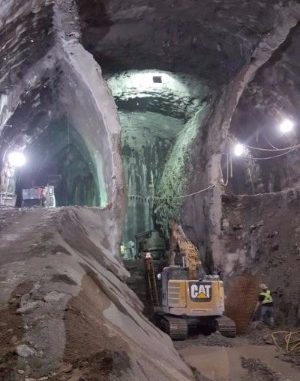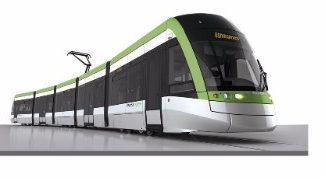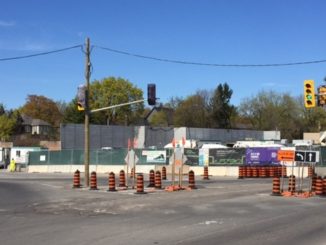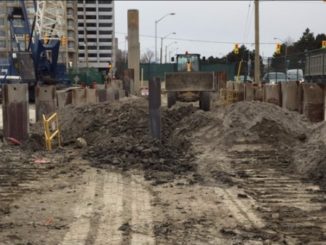
The Eglinton Crosstown includes a 10-kilometre underground portion, between Weston Road and Laird Drive, where 15 below-grade stations are under construction. Eleven will be built using a “cut-and cover” method and four, including Laird Station, are going to be “mined.”
Right now, excavation of the secondary entrance at Laird Station is nearing completion and mining will begin soon.
During mining, crews will excavate from the existing shafts and work deep beneath Eglinton Avenue. The mining technique will not be used at every location along the line but is being implemented where geology permits due to its reduced impact at street level.
Advantages of Mining
There are many reasons for mining stations, including fewer disruptions and inconveniences for drivers, residents and businesses. While crews work below the surface, there are minimal changes to traffic, people can come and go that much easier and there is less impact on everyone’s daily lives.
Underground Activities
The primary underground activities for safe and effective excavation include the need to ensure removal of ground water, installation of supports for the excavation, excavation and concrete works.
As work progresses, it will occur simultaneously underground and at street level. The limited activities visible to the public will include: delivery of materials, removal of soils, equipment and pipes necessary for dewatering and ventilation.
What You May Experience
In order to take advantage of the mining method, work will need to take place during 24-hour cycles. As a result of construction and associated truck activity, some noise and vibration may be experienced.
Noise Reduction Measures
Prior to this work commencing, several noise mitigation measures were explored and a noise and vibration reduction plan has been put in place. Noise barrier walls, ventilation silencers, rubber mats, alternative backup signals, enclosures for pumps and generators as well as careful sequencing of the works to minimize night time delivery and hauling have all been incorporated in order to minimize the impact that construction will have on the local community.
Over the coming 6-8 weeks crews will be extending hours of work and preparing for continuous works starting in Summer 2017 through to the end of 2019.
By expediting the construction process, this work also serves to help Metrolinx deliver better transit to the city on time.
Working Together
Metrolinx and its contractor, Crosslinx Transit Solutions, will work together with the City of Toronto to monitor any situation of concern or disruptions. We know that during construction of this significance, residents will be inconvenienced. We will continue to work hard to keep residents informed as we deliver this important transit project. Thank you for your patience.




Leave a Reply